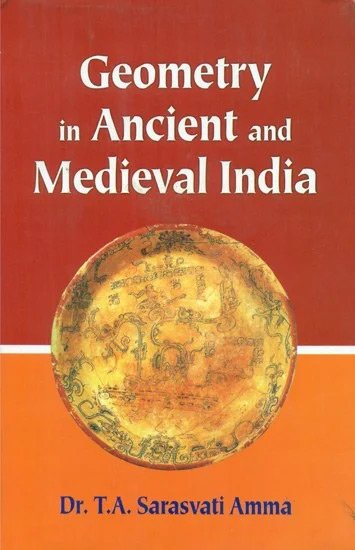Geometry in Ancient and Medieval India
author: Dr. T.A. Sarasvati Amma
edition: 2017, Motilal Banarsidass Publishers Pvt. Ltd.
pages: 278
ISBN-10: 8120813448
ISBN-13: 9788120813441
Topic: Jyotisha
Preface
This book is the third in a series of books on Indian Mathematics. The first two, History of Hindu Mathematics by B.B. Datta and A.N. Singh, Part I first published in 1935 and Part II published in 1938, concern themselves with Arithmetic and Algebra in Pre-British India. The present book, the author’s doctoral thesis, has geometry in the India of the same period as its theme. A similar history of Indian Trigonometry has been compiled by Dr. R.C. Gupta of the Birla Institute of Technology as his doctoral thesis under the guidance of the present author, who has also collected some materials for a history of series Mathematics in India. She hopes to be able to present them in a book form before the research world. A comprehensive history of Indian astronomy is another desideratum to complete the picture of the development of Mathematics in ancient and medieval India.
Indeed the last one should have been the nucleus around which the other sections are to be grouped. For, at least after the Sulbasutra period, the main developments in Indian mathematics were oriented towards and inspired by the needs of astronomy. The word, Jyotisa (the science of the luminaries) covered all branches of mathematics The word, ‘ganita’ (calculations) which combined with Pati (calculating board), Bija (algebraical elements) and Ksetra (held or figure), denotes arithmetic, algebra and geometry respectively has also got an astronomical colouring, since the root ‘gan’ has always had a Special association with astronomical computations.
Geometry, as remarked above, is designated as Ksetragainita in most Indian mathematical works. Ksetra means a closed figure whether it be a field or a figure drawn on the calculating board. In the Sulbasutras and in the Buddhist works rajju or Pujjuganita (calculations with the cord) stands for geometrical Calculations. It is only very late that we come across the use of the term Rekhaganita, calculations connected with the line.
Ksetraganita does not include the calculation of volumes, which is generally given under a separate heading Khatavyavahara section dealing with excavations. Rasiganita, calculations connected with heaps also has some geometrical interest. The present work is mainly based on the Ksetra and Khata sections of available mathematical texts, Rasiganita is rarely made use of, since these calculations are usually approximations. Most astronomical calculations being based on geometry, the purely astronomical texts also will yield geometrical material. But such material is not included in this study. In some of the texts like the Ganitasarasamgraha, Mahasiddhanta and the Ganitakaumudi rules or formulae are given for computing the areas of figures which are not basic geometric, figures, but which can be cut up into basic geometric figures like the segment and the triangle. Examples are the figures called Yam (barley corn), muraja (a sort of drum) and Sabkha (conch shell). These are also omitted in this study unless they have some special geometrical interest.
The completion of this work as planned is primarily due to the help and encouragement received from my guide, Dr. V. Raghavan, Professor of Sanskrit (since retired), Madras University. I am extremely grateful for his guidance and for gracing this book with his valuable Foreword. I also acknowledge with grateful thanks the help given to me by Prof. T.S. Kuppanna Sastrigal, retired Professor of Sanskrit, Sanskrit College, Madras, Dr. K. Kunchunni Raja, Professor of Sanskrit, Madras University, Prof. C.T. Rajagopal, retired Director, Ramanujam Institute, Madras, Sri Rama Verma (Maru) Tampuran (Joint editor of the Yuktibhasa), Dr. K.V. Sharma, (now) Reader in Sanskrit, Punjab University, in procuring books and manuscripts- and in unravelling the meaning of obscure mathematical passages, and the help of my friends and colleagues Smt. C. P. Parvati, Smt. Helen Barnard and Sri K. R. Prabhakar in correcting the typescript and in typing and proof—reading.
I thank the Government of India for granting me a Humanities Research Scholarship and for sanctioning 50% of the publication cost, though I could not make use of the promised help in time and so forfeited it. I am grateful to the Ranchi University for subsidising this publication in part and to Motilal Banarsidass, Publishers and Book-sellers, for bringing out this work, which, by its very nature, has scant commercial value.
